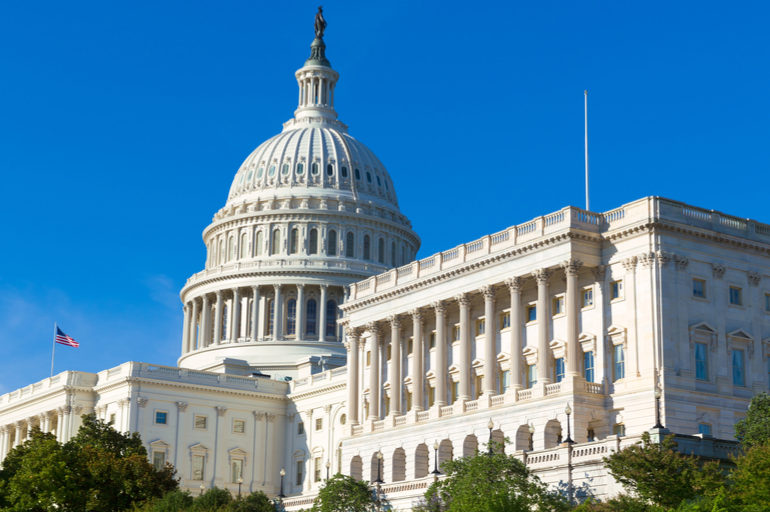
How to Rebalance Power Between Congress and the Executive Branch
by James R. Rogers
Ben Peterson, an occasional contributor to L&L, discusses the interplay between constitutional norms and institutions at National Affairs. I style the takeaway point as this: interests need substantially to align with constitutional norms for those norms to survive. They need not align perfectly, but they need to align significantly.
The U.S. national government reflected “congressional government,” that is, congressionally-dominated governance, for its first century and a half. The founders anticipated this. As a result, the Constitution intentionally divides and weakens Congress, and seeks to “fortify” executive power. James Madison articulates the expectation in a well-known passage in Federalist 51:
In republican government, the legislative authority necessarily predominates. The remedy for this inconveniency is to divide the legislature into different branches; and to render them, by different modes of election and different principles of action, as little connected with each other as the nature of their common functions and their common dependence on the society will admit. It may even be necessary to guard against dangerous encroachments by still further precautions. As the weight of the legislative authority requires that it should be thus divided, the weakness of the executive may require, on the other hand, that it should be fortified.
While this view dominated for the first two-thirds of U.S. history, it appears almost quaint today with increasing concern of domination by America’s unitary executive relative to its plural legislature.
Different currents induced this shift.
First, America’s experience is not unique. Increase in executive power in governments in the 20th Century has been a global phenomenon. Focusing on U.S.-specific variables may allow us to account for marginal variation in the U.S. relative to other countries. Nonetheless, there appear to be broader, cross-national tendencies at work.
The global trend seems likely to have resulted from dramatic quickening of the political clock across the world, as well as an increasing dependence on technocrats in executive governance. To be sure, information and transport move at speeds unimagined even a century ago, let alone two centuries ago. In his autobiography, U.S. Grant mentions he paid $600 (in 1850s dollars) for a three-month return trip from his military post in California back to New York. Today, the same nominal amount of money pays for a six-hour trip between the two destinations.
While presidents in recent decades have made free use of their inherent powers—their power to act without congressional concurrence—in fact much of the increase in presidential power in the U.S. derives from congressional delegation. President Trump’s recent and controversial declaration of a national emergency did not activate any inherent constitutional powers of the presidency. Rather it activated powers Congress had earlier delegated to the President statutorily.
Given the long experience the U.S. national government had of congressionally-dominated government, it is not enough simply to observe the change from that experience and suggest Congress return to the old model. The question is how the incentive structure Congress faces changed, inducing deference to the executive, and then how to respond institutionally in the face of the changed incentives.
Congress has not been entirely passive as it attempted to adapt to the changing legislative environment. While Congress has not clawed back much power it delegated to the executive, it has taken significant steps at times that dramatically reduced presidential executive power. Congressional creation both of independent executive agencies and the creation of the merit system immunized vast swaths of executive bureaucracy from presidential control.
The irony is that Congress cabined presidential power even while its actions increased executive power overall. This sets up the symmetric irony that attempts to decrease bureaucratic-executive power will result in an increase of presidential-executive power.
I am dubious congressional power can be increased under current institutional arrangements. Revitalizing the committee system and increasing congressional resources and procedures seem small beer in the face of currents that caused the increase in executive power to begin with. Congress faces an inherent collective action problem relative to the President, one that means legislators systematically underinvest in the institution itself—institutional power is a public good among legislators—relative to the President and the presidency.
Institutional reforms like the creation of a constitutional legislative veto seem absolutely minimal requirements. Even with a congressional veto over the executive, however, there remains the issue of the energy of a plural legislature relative to a unitary executive.
Changes in technology and the policy environment shifted traditional incentive structures between government branches relative to the founding era. Noting institutional norms may provide us with normative leverage on what should be the case—what relationships between the branches we desire to see and sustain—but reformers, even conservative ones, need to account for these fundamental shifts in order to craft reforms that seek to return balance to the relationship between Congress and President.